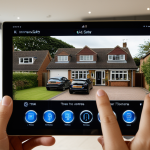Mastering spoken Arabic demands practical, interactive learning focused on real conversations. The Al Kaamil program delivers just that through 16 live sessions blending foundational Arabic with guided practice by native speakers. Designed for beginners, it builds confidence, fluency, and a natural accent over six months—all within a supportive online community tailored to your pace and schedule.
Practical routes to develop spoken Arabic skills for beginners and intermediates
Interactive programs led by native speakers, such as live online sessions and structured immersion, consistently accelerate spoken Arabic progress. Courses like the “Al Kaamil” program incorporate small group classes, covering oral and written communication, paired with listening and reading drills. These sessions feature a balance between structured lessons and spontaneous conversation to sharpen both accuracy and natural fluency.
In parallel : What’s Next for the United Kingdom Amidst Political Changes?
Actionable resources empower independent practice as well. Look for platforms with on-demand lessons, HD audio/video recordings, and dedicated study materials for daily routines. Many modern courses offer discussion groups, app-based vocabulary builders, and downloadable transcripts, allowing flexible review outside class hours. Some resources even target specific regional dialects—Egyptian, Levantine, Gulf, or Maghrebi Arabic—addressing practical needs for travel or work.
A rapid learning curve relies on daily practice and feedback from real speakers. Seek out environments where instructors correct pronunciation, guide accent refinement, and provide conversational support in context. With the right mix of live instruction, self-study content, and adaptable materials, beginners and intermediates can confidently tackle both everyday exchanges and more advanced dialogues in 2025. You can view more details on this page: https://www.al-kunuz.com/en/arabic-group.
In the same genre : What’s Next for the United Kingdom Amidst Political Changes?
Choosing the Right Course and Dialect for Effective Spoken Arabic
Overview of Major Arabic Dialects
Arabic dialects vary widely, each with its own appeal and practical use. Egyptian Arabic is the most commonly understood due to its prevalence in media. Levantine Arabic dominates daily life from Syria to Lebanon, Jordan, and Palestine, making it invaluable for conversations in those areas. Gulf Arabic is favored in Saudi Arabia and surrounding states, while Moroccan Arabic introduces distinct vocabulary and pronunciation, often presenting a steeper learning curve for outsiders. Each dialect serves as a gateway to lively interactions and on-the-ground communication, unlike the standardized literary Modern Standard Arabic (MSA) used in formal contexts.
Evaluating Structured Courses
Course selection matters for beginners targeting spoken Arabic. Al Balagh’s part-time program blends structural grammar with real conversational practice, using native instructors and interactive digital materials to foster authentic speaking skills. Flexible formats—including live classes, recordings, and mobile access—accommodate diverse learning styles and schedules. The Al Kaamil program, hosted by Al Kunuz, emphasizes immersion with a balanced curriculum across all skills and small group sessions. Instructors’ native expertise and thoughtfully paced lesson plans are strong assets for confident progress in any dialect.
Matching Personal Goals to the Right Dialect and Course
Identify your goals—travel, work, religious understanding, or settling abroad—to pinpoint a dialect and course that aligns with your objectives. Programs like Al Balagh and Al Kaamil are structured to connect practical language use with context-specific vocabulary and skills, simplifying daily interactions and easing integration into new communities.
Building fluency through practical strategies and daily routines
Leveraging live online sessions, speaking clubs, and group classes for conversational immersion
Begin building fluency by engaging consistently in live online sessions and group classes led by native Arabic speakers. According to leading programs, small group formats intensify participation and allow for tailored feedback, ensuring meaningful speaking opportunities. Speaking clubs simulate real-world conversation and encourage experimentation with different dialects. This interactive environment is especially effective when classes emphasize colloquial language as used by locals, moving beyond what is found in textbooks.
Daily pronunciation, listening, and speaking exercises for accent improvement and natural dialogue
Precision in spoken Arabic grows with routine practice. Dedicate time every day for pronunciation drills, listening exercises, and speaking out loud. Use short, practical dialogues and shadow native recordings—both strategies shown to refine intonation and accent rapidly. Listening to high-quality audio of various dialects and repeating after speakers helps internalize natural speech patterns and boosts confidence. Focused daily routines make Arabic pronunciation tips actionable and easy to implement, especially when mimicking authentic conversational scenarios.
Structured use of language exchange partners, dedicated WhatsApp groups, and online forums for ongoing support and feedback
Fluency develops further with structured peer interaction. Join language exchange partnerships, participate actively in WhatsApp study groups, and engage in moderated online forums. Consistent feedback from peers and instructors supports progress, helps resolve doubts, and sustains motivation during the Arabic language journey. These collaborative strategies provide a supportive ecosystem for sustained speaking practice, making each day a step closer to confident communication.
Essential supplementary tools for sustained progress in spoken Arabic
Best free apps, podcasts, and YouTube channels for interactive pronunciation and real-life conversation practice
Precision: High-quality supplementary tools such as Arabic language learning apps and YouTube channels support functional pronunciation and natural conversation skills. Recall: Practicing daily with these resources—especially those featuring native speakers—reinforces pronunciation, listening, and fluency.
Interactive apps like Duolingo or Memrise use gamified language drills, aiding regular vocabulary practice. YouTube channels led by native speakers, especially those focusing on dialects (Egyptian, Moroccan, Levantine), provide accessible video lessons and pronunciation tips. Many podcasts offer situational dialogues, story-based exercises, and accent training—for free.
Techniques for expanding practical vocabulary including flashcards, phrasebooks, and audio resources
Arabic vocabulary for beginners develops most rapidly through repetitive, multisensory tools. Flashcard apps such as Anki or Quizlet display frequent phrases and everyday words. Printable PDF phrasebooks help reinforce context-based memorization. Listening to audio resources—from podcasts to recorded conversations—cements recognition and develops real-life recall.
Sample dialogues, everyday phrases, and immersion tips to bridge classroom learning with real-world Arabic conversations
Structured dialogues allow practical application. Start with easy Arabic sentences for daily use, such as greetings, shopping exchanges, or travel requests. Practice with classic immersion methods: shadowing native speakers, repeating after video lessons, or joining online conversation groups. These habits help learners move from textbook Arabic into real conversational fluency.






